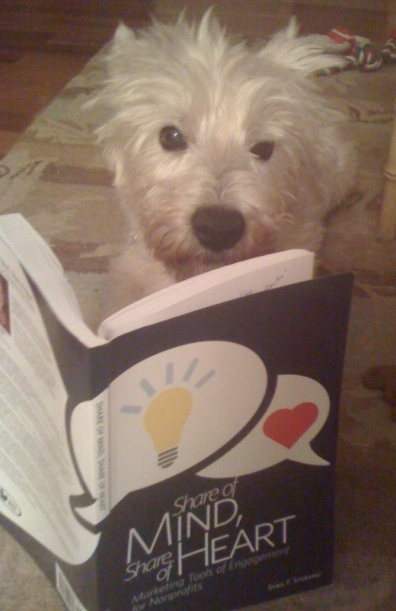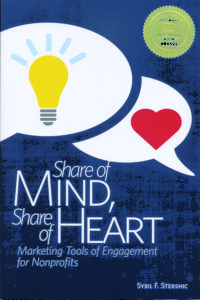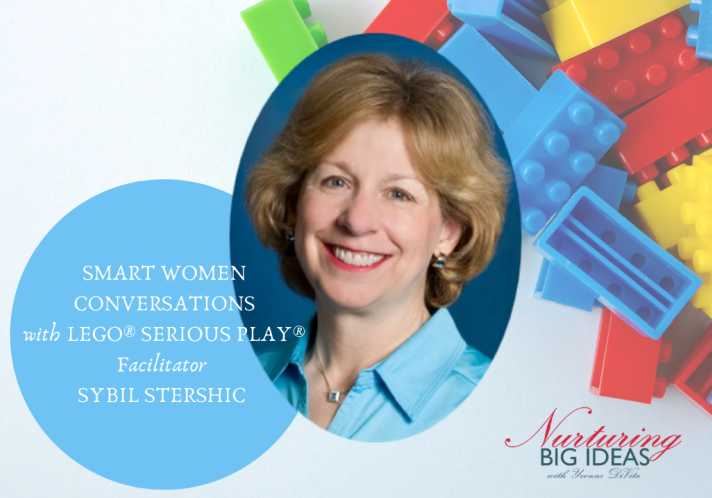I don’t remember when I started reading (and frequently quoting) posts by Judith M. Bardwick, Ph.D., but I was hooked on her insight into employee and organizational development. A highly respected writer, consultant, and speaker, she is known for combining “cutting-edge psychological research with practical business applications to optimize organizational performance.”
I recently reached out to Dr. Bardwick and am honored to feature her here.
QSM: You wrote about the “psychological recession” nearly ten years ago to describe the work environment in your groundbreaking book, One Foot Out the Door: How to Combat the Psychological Recession That’s Alienating Employees and Hurting American Business. What is the Psychological Recession, and why does it still matter?
Judy: The Psychological Recession is a bleak feeling of vulnerability to bad forces that are too large for an individual to control or manage. It can be triggered by individual events, i.e., losing your job, or huge events like the periodic recessions our economy falls into. A Psychological Recession lasts much longer than the economic one because being/feeling depressed leads to greater feelings of being powerless and hapless.
A perfect example would be the endless reference to the Great Depression (and now the Great Recession) over several generations. My grandparents raised it as a lesson for their children to be economically prudent and I was taught the same lesson by their children, who were my parents. As a result, I pay bills quickly, never borrow money, and am never in debt.
 The Psychological Recession matters a hell of a lot because the economy grows as a result of OPTIMISM and TRUST. There is little or no trust of government or business in the face of a Psychological Recession and, equally powerful, there is PESSIMISM AND THEREFORE ECONOMIC CAUTION which means little or no investing because investing depends on being able to see the future in a positive light.
The Psychological Recession matters a hell of a lot because the economy grows as a result of OPTIMISM and TRUST. There is little or no trust of government or business in the face of a Psychological Recession and, equally powerful, there is PESSIMISM AND THEREFORE ECONOMIC CAUTION which means little or no investing because investing depends on being able to see the future in a positive light.
At the present time we have very large, very vulnerable groups of people including, especially, the long-term jobless or under-employed, recent college grads, uneducated low wage populations, and scariest of all, the previously successful middle class.
These phenomena were clearest first in developed economies and now include emerging economies. At the present time, you can see the effects of expecting future blows and endless vulnerability world-wide in the general low levels of investment and the destructive growth of caution-creating bureaucratic regulations.
We need the bottle to be seen as half-FULL for nations to return to GDP growth levels of 3.5-4.00.
QSM: You’ve written extensively about optimizing organizational performance, advocating “the well being of employees has to be perceived not as a cost — but rather as an investment with a large pay-off.” Given little improvement in national studies on employee engagement, why are we making such little progress in increasing employee engagement? Also, what do you think is most important for the next generation of managers to know about building a workplace culture with employees based on trust, respect, and commitment?
Judy: I don’t see enough direct data to be certain of the answer but my sense of it is no employees are perceived as individuals and individuals want and need to be respected, included, and valued.
It’s my belief that most HR people and many executives define FAIRNESS as treating everyone identically. When everyone gets the same benefits, same forms of recognition, same incentives … none of it has any value. If someone believes they are making very significant contributions to the business of the business, and others make some contributions and some contribute nothing, and the organization does not differentiate between them, the result is resentment and anger followed by apathy.
You will notice that the actions are decided and directed by the employer with basically little or no input from the employee. This is no way to make friends.
What people most want changes over a period of a decade or two depending on large part on the economy and the size of opportunity. It was absolutely logical that the Great Generation, which experienced the Depression and WWII, greatest wish was for economic security, and the great companies gave employees security for life if they were loyal and stayed with the organization. The next generation, the older boomers, took security for granted and most wanted opportunities to succeed, become autonomous and find meaning in their work. Younger boomers looked for a balanced life as many parents were educated and women began to enter the professional labor force.
Following the Great Recession security reappears as hugely valuable. There’s no surprise there.
There are other important motives at different times: Before the Great Recession the Millennials wanted their coworkers to be their equals; they wanted their lifestyle to reflect their basic values so many businesses moved from an urban environment to a suburban or rural one. They put flexibility high on their list because both parents were employed and their kids needed to be driven to school and other activities …
How do you know what’s most important to an INDIVIDUAL who also happens to be a member of a generation? The fundamental answer you ask is, “What would make your life more satisfying or easier that we could help you with?” That requires a trusting relationship between the questioner and the employee.
The question is open-ended. It provides no guidance or limit. How could an organization handle an unlimited number of answers? The answer is, if you think ABSTRACTLY, the number of things people most value will range from 1-3 in or following harder economic times and 3-6 when the economy is good and creating opportunities. The vast majority of what people want most will fall into a limited number of categories. Any organization can handle 6 kinds of categories. And if someone asks for something impossible, say that and encourage an alternative. And, the question might be posed every year or two because the answer can change.
For example, autonomy is highly desired when times are good. What might that include? How about having freedom about the time when you come to work and when you leave; having freedom to decide where you work or what you are working on; having time to create and initiate new projects; having freedom about the team you join or the members you invite to join the team you’re building.
Chapter 8 in my book, One Foot Out the Door, discusses CUSTOMIZATION at length. But the take-home of this answer is while “WE” characterizes great teams and families, it is also necessary to recognize that there’s also always an “I” that needs to be recognized. Customization is all about responding to “I”. If an organization, or a family, or a group does that, Engagement and Commitment will soar.
QSM: As a business professional and academic, what do you think should be taught in schools – and in life – to prepare young people to be engaged and productive members in the workplace?
Judy: I’ve been married twice. My second husband was “a Mustang” in the military. That means he started out as an 18 year old high school graduate who entered the Coast Guard as a black shoe sailor and rose to become a Captain (next rank is Admiral). When we married he still had some of his high school books and I was amazed by their content. He and the other students in his small, rural high school were required to think, comprehend, abstract, and write and talk at the college level. And, in addition to the academic learning, they also mastered cooking and sewing, building and gardening, ethics and behavior. When they graduated from high school they were ready to become responsible and independent adults.
What a difference a generation or two makes!
Young people today are generally vastly more skilled in using technology than their parents. In that sense they’re sophisticated. But personal development, taking on responsibility, being independent and inter-dependent is hit or miss. They are very aware of what’s in and politically acceptable but they run in groups. Real independence is as rare as divergent thinking.
Too many of our children and adolescents are much too coddled by parents and teachers. They have too little freedom to explore and take risks and start developing confidence and resilience. “Good” and “Bad” have lost their ethical power for behavioral guidance and have become too judgmental in this solely relative world of explanations and excuses. “Selfies” are prized photographs because narcissism is endemic. High School and College kids know nothing of America’s founding and its historic values. Civics, Government, History and Geography are not addressed adequately or at all in many schools. In general, there’s too little discipline imposed, much less self-developed, and there’s too much ignorance and lack of appreciation of what came before them.
In short, there’s not much perspective as a result of most contemporary education.
Most of what I’m talking about in terms of personal development is taught in places like Montessori schools and to some extent in charter schools. But to a harrowing extent none of this is taught in most schools partly because the focus has shifted to national test scores. While we certainly need all of our children to be able readers, writers and users of math, we also need them to grow up. Much of that process now depends on parental models of behavior and rising expectations by parents of growing maturity, insight, autonomy, responsibility and empathy on the part of their children.
My brother and I grew up in a tiny village of 3 or 4 square blocks in New York City. Most of the parents were immigrants, all of whom valued education as one of their highest priorities. I don’t remember our parents helping us with our homework or supervising our play. There were known rules and we pretty much obeyed them, and we certainly worked hard at meeting our parent’s unspoken expectations of behavior and achievement. I don’t think we gave any of it much thought in the sense that our friend’s parents had the same rules and high expectations. And in our little village, everyone knew everything about everyone.
Without the support of institutions like schools, churches, and neighborhoods where many people know each other and each other’s children, optimizing your child’s academic and personal development is an enormous burden on parents. Changing the circumstances of academic and personal learning will require a major shift in cultural values and priorities. Unfortunately, but frequently, that kind of huge change needs things to get worse before there is any way they can get better.
QSM: Thank you, Judy!




 I was encouraged by my nonprofit colleagues to write Share of Mind, Share of Heart given the favorable response to
I was encouraged by my nonprofit colleagues to write Share of Mind, Share of Heart given the favorable response to 









